Domestic means of early missile warning. 2-Part I
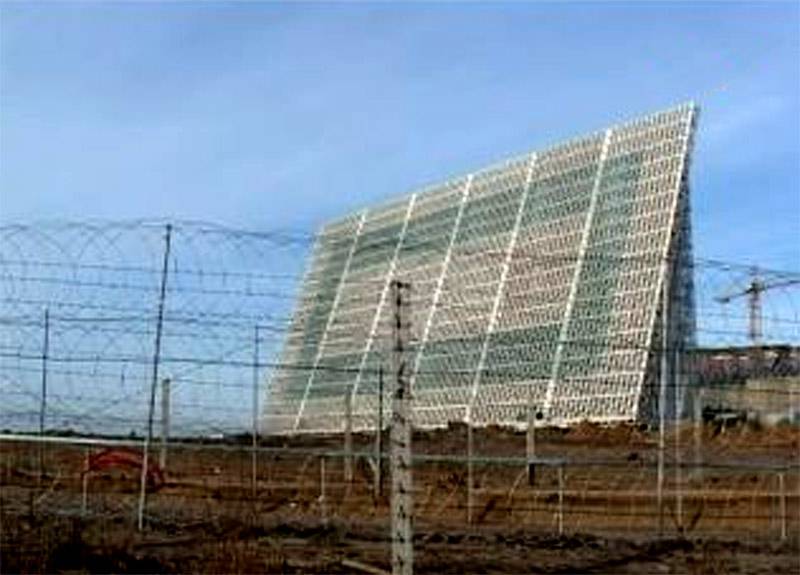
In addition to the over-horizon and trans-horizon radars, the Soviet early-warning system used a space component based on artificial earth satellites (AES). This made it possible to significantly increase the reliability of information and detect ballistic missiles almost immediately after launch. In 1980, the early detection system for launching an ICBM (“Eye” system) began to function, consisting of four US-K satellites (Unified Control System) in high-elliptical orbits and the Central Ground Command Center (CCP) in Serpukhov-15 near Moscow (garrison Kurilovo ”), also known as“ Western KP ”. Information from satellites arrived at parabolic antennas, covered with large radiotransparent domes, multi-tone antennas continuously monitored the constellation of SPRN satellites in highly elliptical and geostationary orbits.
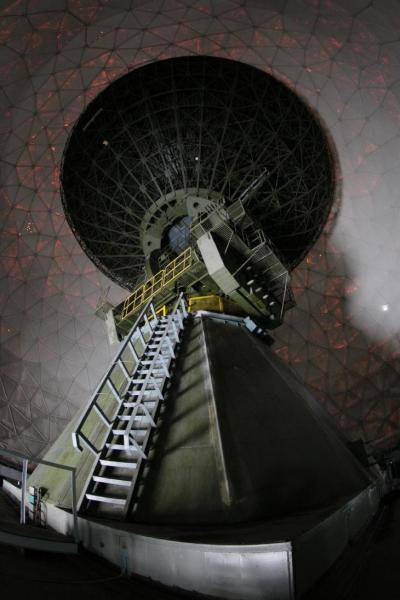
The apogees of the high-elliptical orbit of the US-K satellite were located over the Atlantic and Pacific oceans. This made it possible to observe the basing areas of American ICBMs on both daily turns and at the same time maintain a direct connection with the command post near Moscow or in the Far East. To reduce the illumination by radiation reflected from the Earth and clouds, the satellites did not observe a vertical downward, but at an angle. One satellite could have monitored for 6 hours, for around-the-clock work in orbit there should have been at least four spacecraft. To ensure reliable and reliable observation of the satellite constellation, nine devices had to be - this achieved the necessary duplication in the event of premature satellite failure, and also allowed two or three satellites to be observed simultaneously, which reduced the likelihood of false alarms. And such cases have happened: it is known that 26 September 1983, the system issued a false alarm about a rocket attack, it was the result of the reflection of sunlight from the clouds. Fortunately, the duty shift command center acted professionally, and the signal after analyzing all the circumstances was found to be false. A satellite constellation of nine satellites, which provides simultaneous observation of several satellites and, as a result, high reliability of information, began to function in the 1987 year.
The Oko system was officially put into service in the 1982 year, and since 1984, another satellite in the geostationary orbit has begun its operation. The US-KS spacecraft (“Oko-S”) was a modified US-K satellite intended for operation in a geostationary orbit. The satellites of this modification were placed at the point of standing at 24 ° west longitude, providing observation of the central part of the US territory at the edge of the visible disk of the earth's surface. The satellites located in the geostationary orbit have a significant advantage - they do not change their position relative to the earth's surface and are able to provide duplication of data obtained from a constellation of satellites in highly elliptical orbits. In addition to controlling the continental US, the Soviet satellite-based satellite control system provided monitoring of combat patrol areas of American SSBNs in the Atlantic and Pacific Oceans.
In addition to the "Western KP" in the Moscow region, in the 40 km south of Komsomolsk-on-Amur, on the shore of Lake Hummi, was built "Eastern KP" ("Gaiter-1"). Continuous processing of information received from spacecraft was carried out at the SPRN CP in the central part of the country and in the Far East, followed by its transfer to the Main Missile Attack Warning Center (RNP) located not far from the village of Timonovo in the Solnechnogorsk district of the Moscow Region (Solnechnogorsk- 7 ”).
In contrast to the “Western KP”, which is more dispersed in the terrain, the object in the Far East is much more compact, seven parabolic antennas under the radio-transparent domes of white color lined up in two rows. Interestingly, the receiving antennas of the Duga over-the-horizon radar, which is also part of the EWS, were located nearby. In general, in the 80-s in the vicinity of Komsomolsk-on-Amur, an unprecedented concentration of military units and formations was observed. A large Far Eastern military-industrial center and parts and formations deployed in the area protected the 8 air defense corps from air strikes.
After the Oko system was put on combat duty, work began on the creation of its improved version. This was due to the need to detect launching missiles not only from the continental territory of the United States, but also from the rest of the globe. The deployment of the USO-KMO system (Unified Sea and Oceans Control System) “Oko-1” with satellites in geostationary orbit began in February 1991 in the Soviet Union with the launch of the second-generation spacecraft, and it was already adopted by the Russian armed forces in 1996 year. A distinctive feature of the "Eye-1" system was the use of vertical observation of the launch of rockets against the background of the earth's surface, this makes it possible not only to record the fact of a missile launch, but also to determine the direction of their flight. For this purpose, the satellite 71X6 (US-KMO) is equipped with an infrared telescope with a mirror with a diameter of 1 m and a solar protective screen of size 4,5 m.
The full constellation of satellites should have included seven satellites in geostationary orbits and four satellites in high elliptical orbits. All of them, regardless of the orbit, are capable of detecting launches of ICBMs and SLBMs against the background of the earth’s surface and cloud cover. The launch of satellites into orbit was carried out by the Proton-K launch vehicle from the Baikonur cosmodrome.
It was not possible to implement all the plans to build the orbital constellation of the SPRN, only 1991 US-KMO devices were launched from 2012 to 8. By the middle of 2014, there were two 73Д6 units in the limited working system that could work only a few hours a day. But in January, 2015, they also failed. The reason for this situation was the low reliability of the onboard equipment, instead of the planned 5-7 years of active work, the service life of the satellites was 2-3 of the year. The most offensive is that the elimination of the Russian satellite group warning of a rocket attack did not occur during the Gorbachev “perestroika” or Yeltsin “troubled times”, but in the well-fed years of “rebirth” and “rise from the knees” when huge funds were spent on carrying out “image events” ". From the beginning of 2015, our missile attack warning system relies only on over-the-counter radar, which, of course, shortens the time it takes to make a retaliatory strike.
Unfortunately, with the ground part of the satellite warning system, too, everything was not smooth. 10 May 2001 of the year a fire broke out at the central control center in the Moscow region, while the building and ground communications and control equipment were seriously affected. According to some reports, the direct damage from the fire amounted to 2 billion rubles. Due to the ignition on the 12 watch, communication with the Russian EWS satellites was lost.
In the second half of 90's, a group of “foreign inspectors” was admitted to a completely secret Soviet-era facility near Komsomolsk-on-Amur as a demonstration of “openness” and a “goodwill gesture”. At the same time, especially for the arrival of "guests" at the entrance to the "East KP" hung a sign "Center for tracking space objects," which still hangs.
At the moment, the future of the satellite constellation of the Russian ESPN is uncertain So, at the "Eastern KP" most of the equipment removed from work and mothballed. About half of the military and civilian specialists involved in the operation and maintenance of Vostochny KP, the processing and retransmission of data were reduced, and the infrastructure of the Far Eastern control center began to deteriorate.
According to information published in the media, the system “Oko-1” should be replaced by the satellite “Unified space system” (CEN). Created in Russia, the CEN satellite system is functionally largely analogous to the American SBIRS. In addition to 14F142 Tundra, which monitor missile launches and calculate trajectories, the CEN should also include satellites of the Liana satellite navigation system and target designation, devices of the optical-electronic and radar reconnaissance system and geodetic satellite system.
The launch of the Tundra satellite into a high elliptical orbit was originally planned for the middle of 2015, but later the launch was postponed to November of 2015. The launch of the device, which received the designation "Cosmos-2510", was performed from the Russian Plesetsk cosmodrome using the Soyuz-2.1b launch vehicle. The only satellite in orbit, of course, is not capable of providing a full early warning of a rocket attack, and serves mainly to prepare and tune ground equipment, training and calculation training.
At the beginning of the 70-s in the USSR, work began on the creation of an effective missile defense system for the city of Moscow, which was to ensure the defense of the city from single warheads. Among other technical innovations was the introduction into the composition of the antimissile system of radar stations with fixed multi-element phased antenna arrays. This made it possible to review (scan) the space in the wide-angle sector in the azimuthal and vertical planes. Prior to construction in the Moscow region, an experienced truncated sample of the Don-2NP station was built and tested at the Sary-Shagan test site.
The central and most complex element of the A-135 PRO system has become the radar station Don-2Н, operating in the centimeter range. This radar is a truncated pyramid with a height of about 35 meters with a side length of about 140 meters at the base and about 100 m on the roof. In each of the four faces there are stationary large-aperture active phased antenna arrays (receiving and transmitting), providing a circular view. The transmitting antenna emits a pulse signal with a capacity of up to 250 MW.
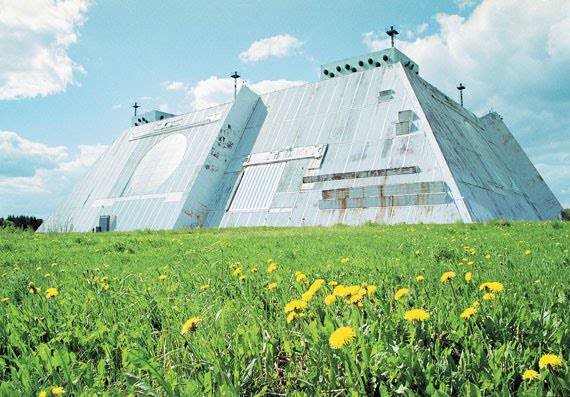
The uniqueness of this station lies in its versatility and versatility. Radar "Don-2H" solves the problem of detecting ballistic targets, selection, tracking, measuring the coordinates and pointing at them interceptor missiles with a nuclear warhead. The station is controlled by a computing complex with a capacity of up to a billion operations per second, built on the basis of four Elbrus-2 supercomputers.
The construction of the station and anti-missile mines began in 1978, in Pushkin District, in 50 km north of Moscow. During the construction of the station, more than 30 000 tons of metal, 50 000 tons of concrete, 20 000 kilometers of various cables were laid. For cooling equipment required hundreds of kilometers of water pipes. Equipment installation, installation and commissioning works were carried out from 1980 to 1987. In 1989, the station was put into trial operation. The A-135 missile defense system itself was officially adopted by the 17 February 1995 of the year.
Initially, Moscow’s missile defense system provided for the use of two echelons of interception of targets: long-range anti-missiles 51Т6 at high altitudes outside the atmosphere and short-range missiles 53Т6 in the atmosphere. According to information published by the Russian Defense Ministry, 51Т6 antimissiles have been removed from combat duty in the 2006 year due to the expiration of the warranty period. Currently, the A-135 system contains only anti-missiles of the near-field 53Т6 with maximum reach in the range of 60 km and in height - 45 km. In order to extend the life of 53Т6 anti-missiles from 2011, they are being equipped with new engines and guidance equipment on a new element base with advanced software during a planned modernization. Tests of armed antimissiles, starting with 1999, are carried out regularly. The last test at the Sary-Shagan test site took place on 21 June 2016.
While the A-135 anti-missile system was quite sophisticated by the standards of the mid-80-s, its capabilities allowed only a limited nuclear attack with single warheads to be reflected. Moscow's missile defense before the start of the 2000-s could successfully withstand monoblock Chinese ballistic missiles equipped with quite primitive means of overcoming missile defense. By the time of adopting the A-135 system, it was no longer able to intercept all American thermonuclear warheads aimed at Moscow, placed on the LGM-30G Minuteman III ICBM and UGM-133A Trident II ICBM.
According to data published in open sources, as of January 2016 of the year, 68 53Т6 interceptor missiles are deployed in the mine launchers in five positioned areas around Moscow. Twelve mines are located in close proximity to the Don-2H radar.
In addition to detecting attacks of ballistic missiles, their tracking and targeting of antimissiles, the Don-2Н station is involved in the missile attack warning system. At a viewing angle of 360 degrees, detection of warheads of ICBMs at a distance of 3700 km is possible. It is possible to control the outer space at a distance (altitude) to 40 000 km. In terms of a number of parameters, the Don-2Н radar still remains unsurpassed. In February 1994 of the year during the ODERACS program from the American Shuttle in February 1994 of the year 6 metal balls were thrown into open space, two in diameter 5, 10 and 15 centimeters. They were in terrestrial orbit from 6 to 13 months, after which they burned down in dense layers of the atmosphere. The purpose of this program was to ascertain the possibilities for detecting small-sized space objects, calibrating radar and optical devices in order to track "space debris". Only the Russian station Don-2H was able to detect and construct the trajectories of the smallest objects with a diameter of 5 cm at a distance of 500 — 800 km with a target height of 352 km. After detection, their tracking was carried out at a distance of up to 1500 km.
In the second half of 70-s after the appearance in the US of SSBNs armed with UGM-96 Trident I SLBMs with HSRC and the release of plans to deploy MGM-31C Pershing II MSM in Europe, the Soviet leadership decided to create a network of over-the-half-range mid-potential stations in the west of the USSR. New radars, thanks to high resolution, in addition to detecting a missile launch, could provide accurate targeting of missile defense systems. It was assumed the construction of four radars with digital information processing, created using the technology of solid-state modules and having the possibility of frequency tuning in two bands. The basic principles of building the new Volga 70М6 station were worked out at the “Danube-3UP” radar station in Sary-Shagan. The construction of a new radar station began in 1986 in Belarus, in 8 km northeast of Gantsevichi.
During construction, for the first time in the USSR, the method of accelerated construction of a multi-storey technological building of large-sized structural modules with the necessary embedded elements for the installation of equipment with the connection of power supply and cooling systems was applied. A new technology for the construction of facilities of this kind from modules made at Moscow factories and delivered to the construction site, has reduced construction time by about half and significantly reduced the cost. This was the first experience of creating a high-readiness radar radar station, which was later developed during the creation of the Voronezh radar. The receiving and transmitting antennas are similar in construction and are based on AFAR. The size of the transmitting part is 36 × 20 meters, receiving - 36 × 36 meters. The positions of the receiving and transmitting parts are separated by 3 km from each other. The modular design of the station allows for a phased upgrade without removal from combat duty.
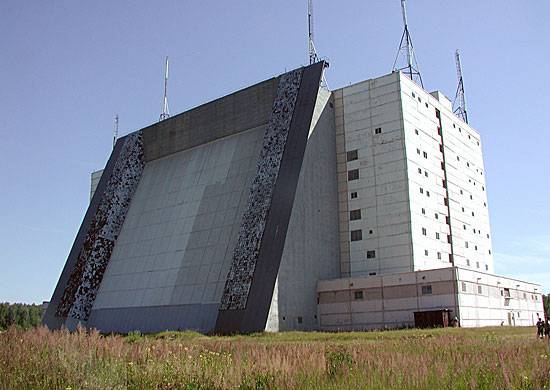
In connection with the conclusion of the INF Treaty, the construction of the station was frozen in 1988. After Russia lost the SPRN node in Latvia, the construction of the Volga radar station in Belarus was resumed. In 1995, a Russian-Belarusian agreement was concluded, according to which the communications node of the Navy Vileyka and ORTU Gantsevichi together with the land plots were transferred to Russia for 25 years without all types of taxes and fees. As compensation, the Belarusian side has been written off part of the debts for energy carriers, Belarusian servicemen are partially servicing the units, and the Belarusian side is provided with information about the rocket and space situation and admission to the Ashuluk air defense ground.
Due to the loss of economic ties, which was associated with the collapse of the USSR and insufficient funding, construction and installation work was delayed until the end of 1999. It was only in December 2001 of the year that the station took over experimental combat duty, and the 1 of October 2003 of the year the Volga radar was put into service. This is the only built station of this type.
The radar station SPRN in Belarus primarily controls the patrol areas of the American, British and French SSBNs in the North Atlantic and the Norwegian Sea. The Volga radar is capable of detecting and identifying space objects and ballistic missiles, as well as tracking their trajectories, calculating starting and falling points, the detection range of an SLBM reaches 4800 km in the azimuth sector 120 degrees. Radar information from the Volga radar in real-time enters the Main center for warning of a missile attack. Currently, it is the only operating facility of the Russian missile attack warning system, located abroad.
The most modern and promising in terms of tracking rocket-prone areas are the Russian radar radar station type 77YA6 "Voronezh-M / DM" meter and decimeter range. In terms of their capabilities in terms of detecting and tracking the ballistic missile warheads of the Voronezh station, they exceed the radars of the previous generation, but the cost of their construction and operation is several times less. Unlike the Dnepr, Don-2H, Daryal and Volga stations, the erection and debugging of which were sometimes stretched by 10 years, the Voronezh radar of the Voronezh series has a high factory readiness, and from the start of construction to setting on combat duty usually passes 2-3 year, the installation of the radar does not exceed 1,5-2 years. Station block-container type, includes the 23 element of the equipment in the containers of factory production.
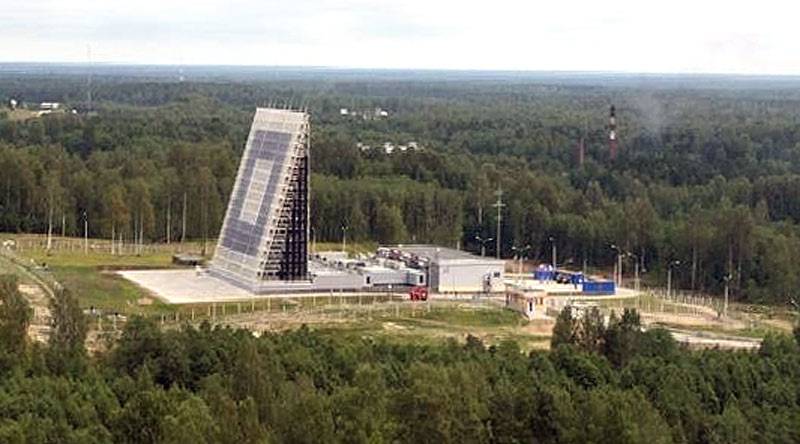
The station consists of a transceiver unit with an AFAR, a pre-fabricated building for personnel and containers with electronic equipment. The modular design principle makes it possible to modernize the radar during operation quickly and at low cost. As part of the radar, instrumentation and data processing equipment, modules and nodes are used to form a station with the required performance characteristics from a unified set of structural elements, in accordance with the operational and tactical requirements at the location. Thanks to the use of the new element base, advanced design solutions and the use of the optimal mode of operation, compared with the stations of the old types, energy consumption has been significantly reduced. Software control of the potential in the sector of responsibility for the range, angles and time makes it possible to efficiently use the radar power. Depending on the situation, it is possible to quickly distribute energy resources in the working area of the radar during peaceful and threatened periods. An integrated diagnostic system and a highly informative control system also reduce the cost of maintaining the radar. Through the use of high-performance computing tools, it is possible to simultaneously accompany up to 500 objects.
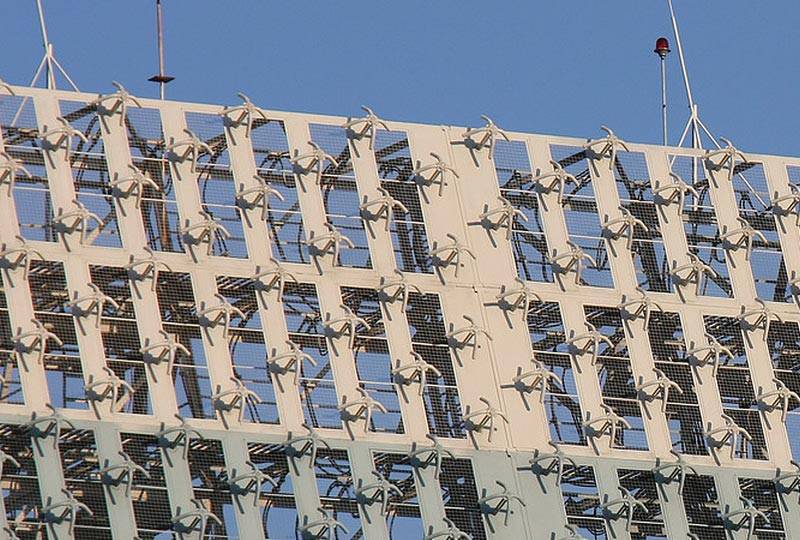
To date, three real-life modifications of the Voronezh radar are known. Voronezh-M stations (77Я6) operate in the meter range, target detection range is up to 6000 km. The Voronezh-DM radar (77YA6-DM) operate in the decimeter range, the range is up to 4500 km horizontally and up to 8000 km vertically. Decimeter stations with a shorter detection range are better suited for missile defense tasks, since the accuracy of determining the coordinates of targets is higher than that of a meter-range radar. In the near future, the detection range of the Voronezh-DM radar should be increased to 6000 km. The last known modification is Voronezh-VP (77Y6-VP) - the development of 77Y6 Voronezh-M. This is a high-potential radar meter range with power consumption - up to 10 MW. Due to the increase in the power of the emitted signal and the introduction of new modes of operation, the possibility of detecting hardly noticeable targets in conditions of organized interference has increased. According to the published information, the Voronezh-VP of the meter range, in addition to the tasks of the EWS, is capable of detecting aerodynamic targets at medium and high altitudes at a considerable distance. This allows you to record the mass take-off of long-range bombers and aircraft tankers "potential partners." But the statements of some “patriotic-minded” visitors to the Military Review site about the possibility of using these stations to effectively monitor the entire airspace of the continental part of the United States, of course, is not true.
Currently, eight Voronezh-M / DM stations under construction or in operation are known. The first station Voronezh-M was built in the Leningrad region near the village of Lehtusi in 2006 year. Radar in Lekhtusi took over 11 on February 2012 on combat duty, covering the north-west missile-prone direction, instead of the destroyed Daryal radar in Skrunda. In Lehtusi, there is a base for ensuring the educational process of the AF Aerospace Military Space Academy. Mozhaisky, where the training and training of personnel for other radar "Voronezh". It was reported about plans to upgrade the head station to the level of "Voronezh-VP".
The next was the Voronezh-DM station in the Krasnodar region near Armavir, built on the site of the runway of the former airfield. It consists of two segments. One closes the gap created after the loss of the Dnepr radar on the Crimean peninsula, the other has replaced the Daryal radar in Azerbaijan. Radar, built near Armavir, controls the southern and south-western direction.
Another station of the UHF band was built in the Kaliningrad region at the abandoned Dunaevka airfield. This radar covers the area of responsibility of the Volga radar in Belarus and the Dnepr in Ukraine. The Voronezh-DM station in the Kaliningrad region is the most western Russian radar of anti-ship missile systems and is capable of controlling space over most of Europe, including the British Isles.
The second radar meter range Voronezh-M was built in Mishelevka near Irkutsk on the site of the dismantled transmitting position of the Daryal radar. Its antenna field is twice the size of a lechtusinsky - 6 sections instead of three, and controls the territory from the west coast of the USA to India. As a result, it was possible to expand the sector of the review to 240 degrees in azimuth. This station replaced the decommissioned Dnepr radar station located in Michelevka.
The Voronezh-M station was also built near Orsk, in the Orenburg region. Since 2015, she works in a test mode. A combat duty mission is scheduled for 2016 year. After that, it will be possible to control the launches of ballistic missiles from Iran and Pakistan.
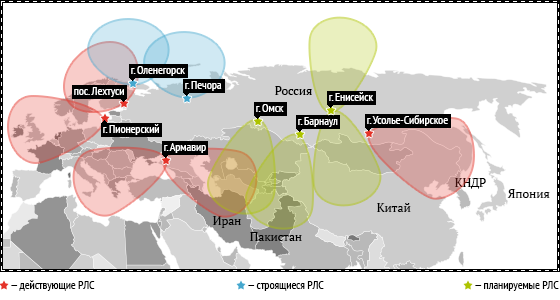
Voronezh-DM decimeter radar stations are being prepared for commissioning in the village of Ust-Kem in the Krasnoyarsk Territory and the Konyukhi village in the Altai Territory. These stations will cover the north-east and south-east directions. Both radars should start combat duty in the near future. In addition, Voronezh-M stations in the Komi republic near Vorkuta, Voronezh-DM in the Amur region and Voronezh-DM in the Murmansk region are at different stages of construction. The last station should replace the complex "Dnepr" / "Daugava".
The adoption of Voronezh-type stations not only significantly expanded the capabilities of rocket and space defense, but also makes it possible to deploy all ground-based missile defense systems in Russia, which should minimize military-political risks and eliminate the possibility of economic and political blackmail from CIS partners . In the future, the Defense Ministry of the Russian Federation intends to completely replace with them all Soviet radar missile attack warnings. With full confidence we can say that the radar series "Voronezh" on the complex characteristics are the best in the world. As of the end of 2015, the main warning center for the missile attack of the Space Command of the VCS received information from ten ORTs. Such a radar coverage of over-the-horizon radar was not even in Soviet times, but the Russian missile attack warning system is currently unbalanced due to the lack of the necessary satellite constellation.
Based on:
http://sputniknews.com
http://englishrussia.com
http://militaryrussia.ru/blog/topic-610.html
http://russianforces.org/blog/2013/01/status_of_the_russian_early-warning.shtml
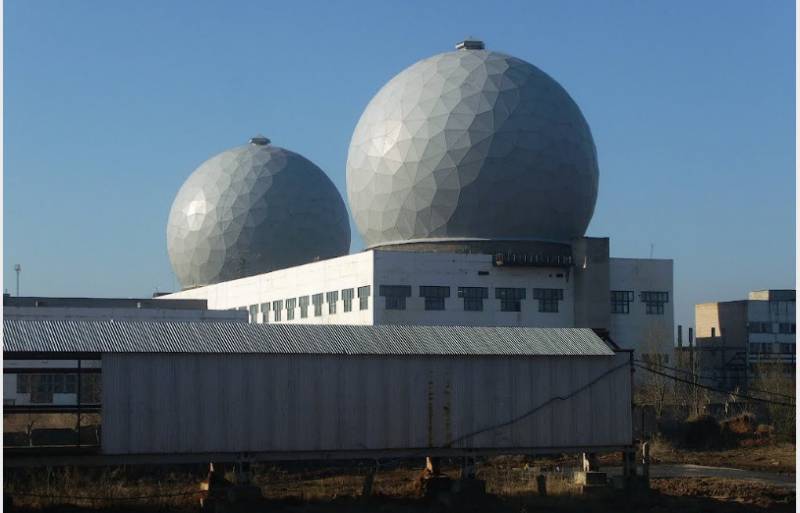
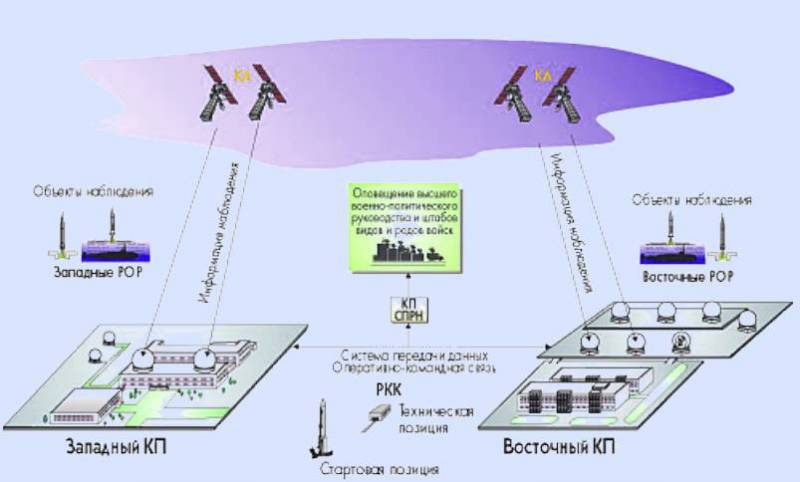
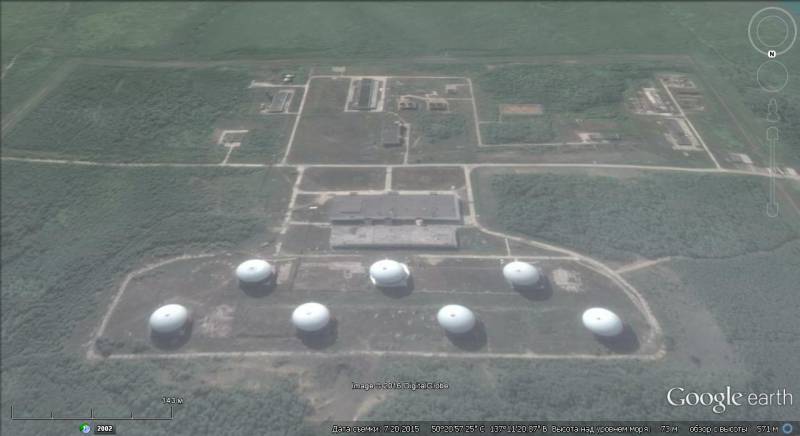
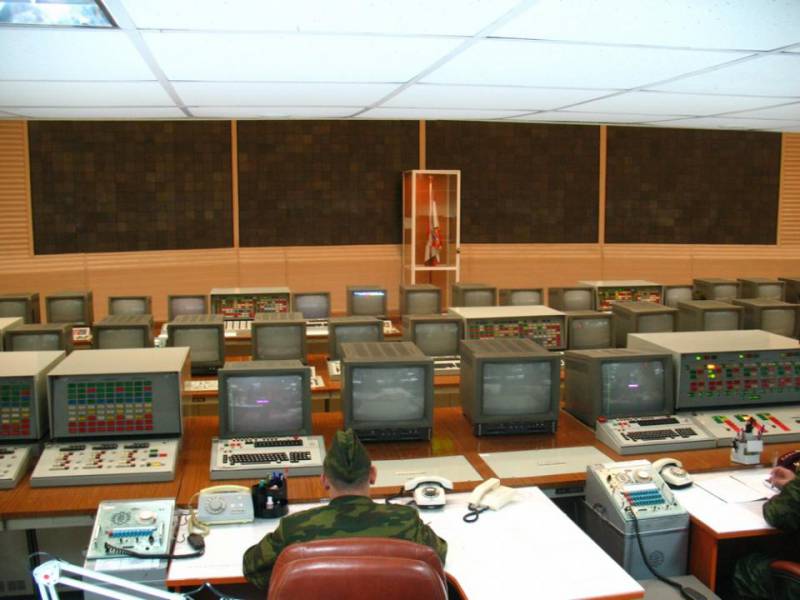
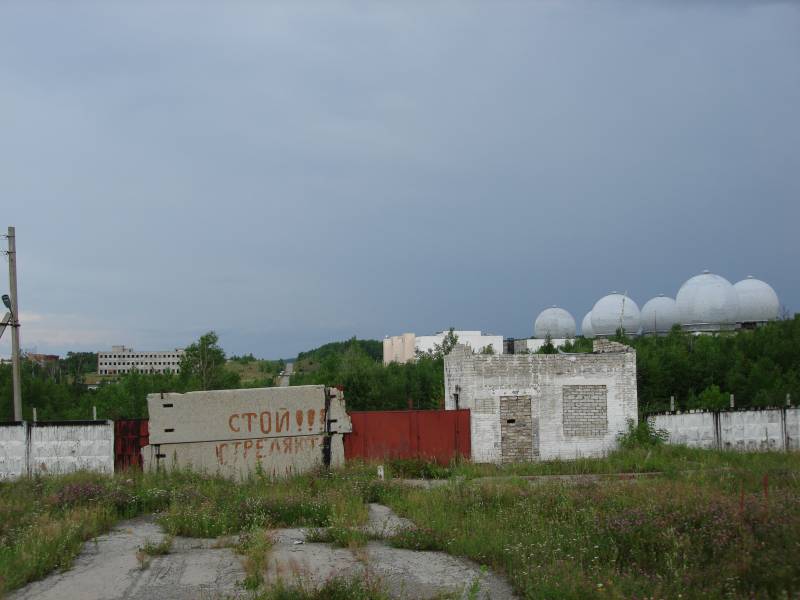
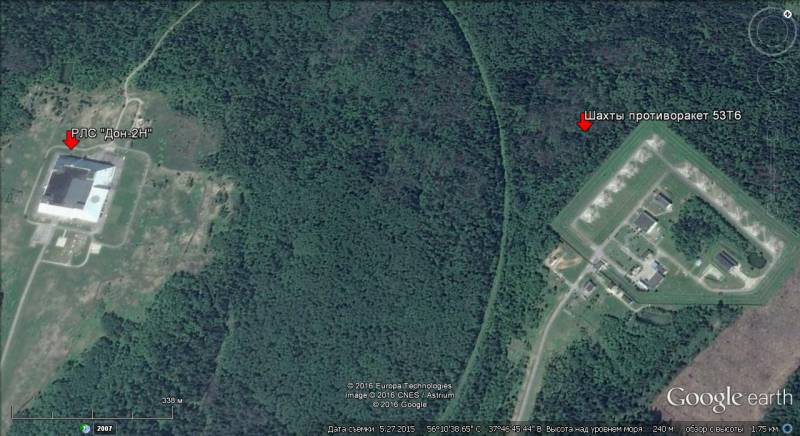
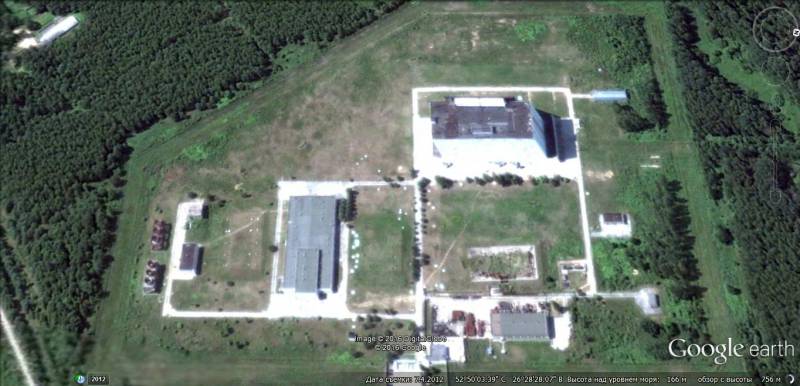
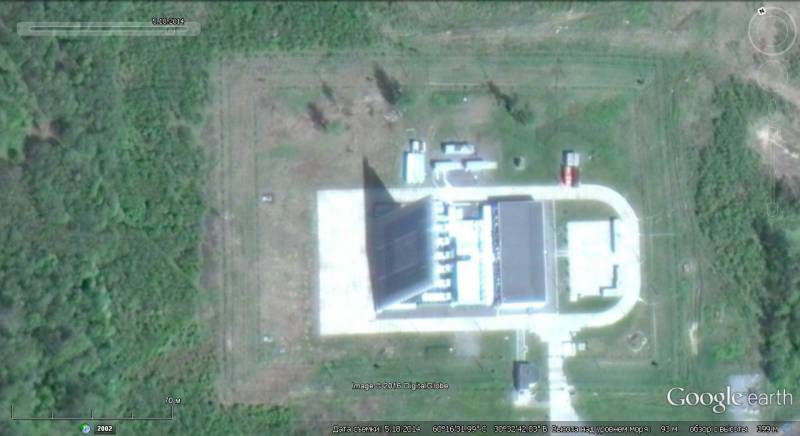
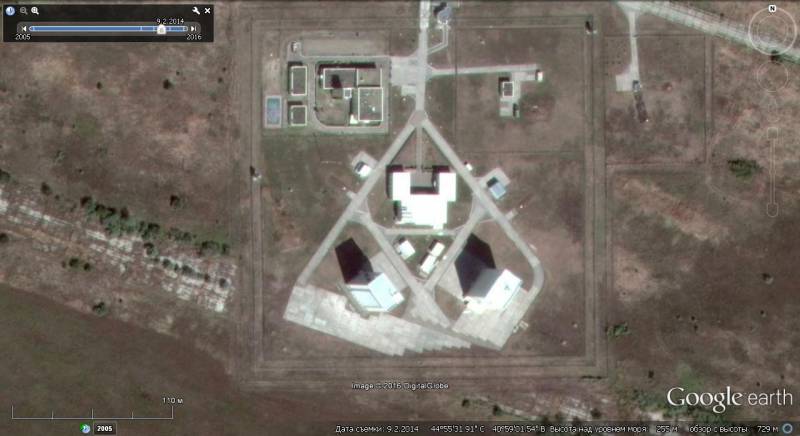
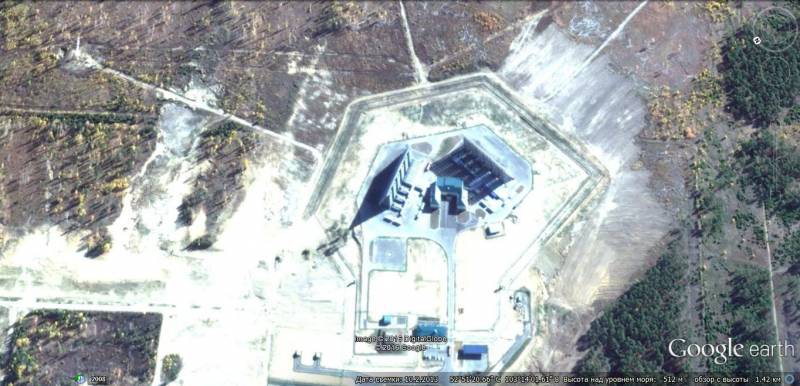
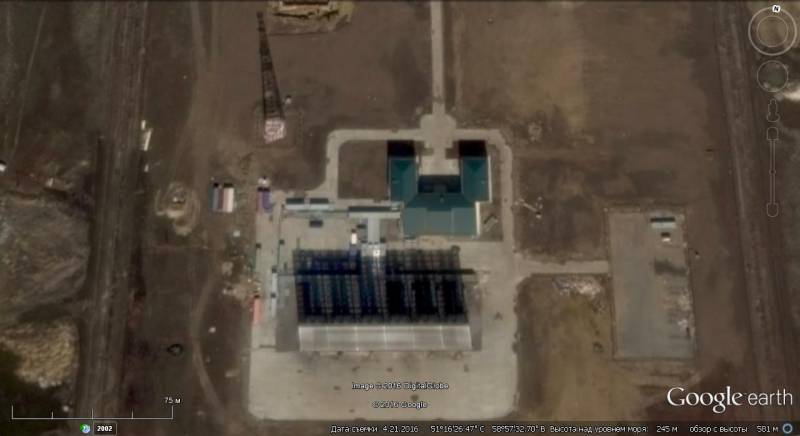
Information